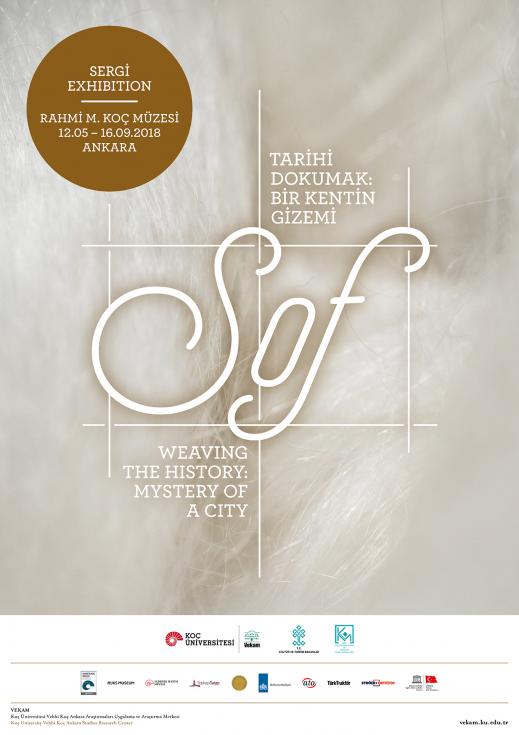Weaving History: Mystery of a City, Sof

CAMLET (SOF) EXHIBITION OPENS IN ANKARA
Koç University Vehbi Koç Ankara Studies Research Center (VEKAM), in collaboration with Rahmi M. Koç Museum Ankara, presents “Weaving History: Mystery of a City”, an exhibition that will run from 12 May until 16 September 2018. At the heart of this exhibition lies Ankara’s historic camlet (sof) fabric, produced from the Ankara goat’s mohair, and showcases this commercial product and the significant place it holds in the history of Ankara. The exhibition displays camlet fabrics and various mohair artefacts from the collections of Ankara Ethnography Museum of the T.R. Ministry of Culture and Tourism, Sadberk Hanım Museum and Topkapı Palace Museum. As a first in Türkiye, there are also plans for visitors to view one of Ankara’s most important representations, “View of Ankara”, an 18th century painting depicting Ankara, on loan from the Rijksmuseum in the Netherlands.
On 12 May, Koç University Vehbi Koç Ankara Studies Research Center (VEKAM), which conducts and supports inter-disciplinary research on the social, economic and cultural heritage of Ankara and its vicinity, opens an exhibition, in collaboration with Rahmi M. Koç Museum Ankara, on camlet fabric, which has become synonymous with Ankara. Curated by Filiz Yenişehirlioğlu, Director of VEKAM, and Gözde Çerçioğlu Yücel, the “Weaving History: Mystery of a City” exhibition, which runs until 16 September, has benefited from the contributions of the T.R. Ministry of Culture and Tourism, Ankara Chamber of Commerce, Netherlands Embassy in Ankara, Ströer Kentvizyon, Türk Traktör, as well as the support of UNESCO.
Connecting Ankara with the rest of the world, camlet weaving and fabric production had a significant role in the economic and social history of the city as it attracted foreign tradesmen who traded it in important European commercial centers such as Venice, Netherlands, Britain, and Poland from the 16th century onwards until the industry’s decline and end in the 19th century. Among the various reasons behind this decline are factors such as global changes in the textile industry, the gradual transformation of foreign trade moving initially towards the export of mohair fiber and then to raw mohair, loss of production knowledge, decrease in the number of looms in Ankara, and the breeding of mohair goats in various parts of the world, especially in South Africa. Today, however, certain individual and institutional projects and productions aim to contribute to the use of mohair in weaving and the textile industry. In this respect, the exhibition showcases modern designs and products that made use of Ankara goat and mohair.
The exhibition also presents two documentaries, directed by Kerime Senyücel, that explore the production of woven mohair products in the breeding farms in Ayaş, a district of Ankara that remains an important center for Ankara goat breeding, as well as the use of the mohair weaving tradition in the production of kese (small bag) and kuşak (sash) in Tosya. A part of the exhibition, prepared with contributions from the Turkish Cultural Foundation (TCF) Cultural Heritage Preservation and Natural Dyes Laboratory (DATU), displays the TCF-DATU Natural Dye Collection containing natural dyestuff used to color mohair and 10 mohair samples dyed with these materials.
“Weaving History: Mystery of a City” exhibition puts Ankara mohair, a cultural value of Ankara, back on the agenda, thereby opening the gates to the mysterious world of this precious and silky fabric produced from shiny mohair fibers that the British called diamond fiber.
Ankara Rahmi M. Koç Müzesi :Necatibey Mahallesi, Depo Sokak No: 1 Altındağ – Ankara // Phn: +90 312 309 68 00
Visiting Hours:
Tuesday – Friday 10:00 – 17:00
Saturday – Sunday and Religious Holidays 10:00-19:00 (1 April – 30 September)
Museum is closed on Mondays.
Special Days
The museum is closed in the first days of religious holidays and eves .
for detailed information on visiting hours and enterence fee please see<<
